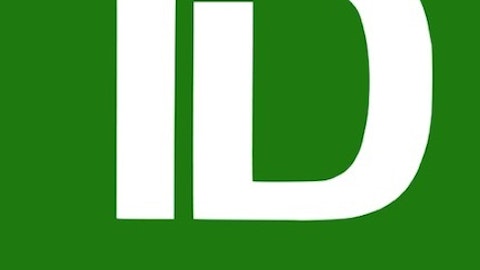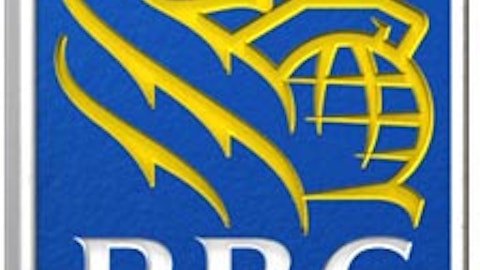Moving further, I believe Toronto-Dominion Bank (USA) (NYSE:TD) stands on stable risk management framework and continued organic growth in all verticals will enable it to regain its AAA credit rating sooner than later.
The Bank of Nova Scotia (USA) (NYSE:BNS) is another big Canadian bank, which was downgraded by Moody’s to Aa2 from Aa1 for long term deposits.
The Bank of Nova Scotia (USA) (NYSE:BNS) is one of the largest banks in Canada, and its operations span across the entire American continent. Like Toronto-Dominion, The Bank of Nova Scotia (USA) (NYSE:BNS) has consistently developed on its BASEL III common equity tier 1 ratio, which currently stands at around 8.6%, allowing the company a sufficient risk cover from any adverse downside in the economy.
With a consistently growing bottom line from all business verticals and a year-on-year revenue growth of 15%, the bank was one of the best performers during the last quarter. The bank has actively taken initiatives in order to improve its risk status by reducing its exposure in Europe by approximately $3 billion from the previous quarter coupled with a low and well controlled market risk at an average one day all bank VAR reduced to $16.8 million compared to the $17.4 million during the first quarter of 2013.
The initiatives taken by the bank suggests it is on the path of growth with a better risk profile. Going forward, I don’t see Moody’s increasing its rating unless the consumer debt falls drastically.
Canadian Imperial Bank of Commerce (USA) (NYSE:CM) commonly known as CIBC, is deeply involved in managing risks in order to bolster the investor confidence much like all its Canadian peers. The company for the second quarter of 2013 reported strong performance in core business divisions.
BASEL III common equity tier 1 ratio for CIBC stands at around 9.7%. It should be noted, during the second quarter of 2013, it was one of the highest among all its Canadian peers. In addition, it must be noted, during January 2012, the debt-to-equity ratio stood at 4.8, whereas during April the same ratio came down to 1.6. This exhibits the banks continued focus on managing risk and creating a safety net in the event of any potential economic and liquidity risk.
However, relative to its peers, CIBC has not taken any noticeable measures to improve its risk profile. Yet, the bank is fundamentally strong, as illustrated in my previous article. I don’t see the bank getting an upgrade from Moody’s any sooner.
So Moody’s downgrade: Does it matter?
Canadian financial institutions have been one of the best managed and safest in the world. World Economic Forum’s constant grading on such institutions as the best during the past five years is no coincidence, rather a culmination of the combined efforts of OSFI (Office of the Superintendent of Financial Institutions Canada) and the willingness of the institutions to strengthen the Canadian economy.
Though Canadian economy faces a serious threat with a high debt to disposable income ratio of 165% coupled with increasing housing prices, the Canadian government is involved in tightening the mortgage lending regulations in order to control the rising consumer debt.
The harsher lending regulations and government warnings on high debt has facilitated in reducing the ardor of home buyers, as the hottest markets such as Vancouver and Toronto gradually cooling off.
Such strategic initiatives coupled with continued improvement in risk management fundamentals enables me to believe the downgrade by Moody’s will not hold back investors.
Ashit Gulati has no position in any stocks mentioned. The Motley Fool recommends The Bank of Nova Scotia (USA).
The article Moody’s Downgrade of the Canadian Banks: Should Investors be Worried? originally appeared on Fool.com.
Copyright © 1995 – 2013 The Motley Fool, LLC. All rights reserved. The Motley Fool has a disclosure policy.



